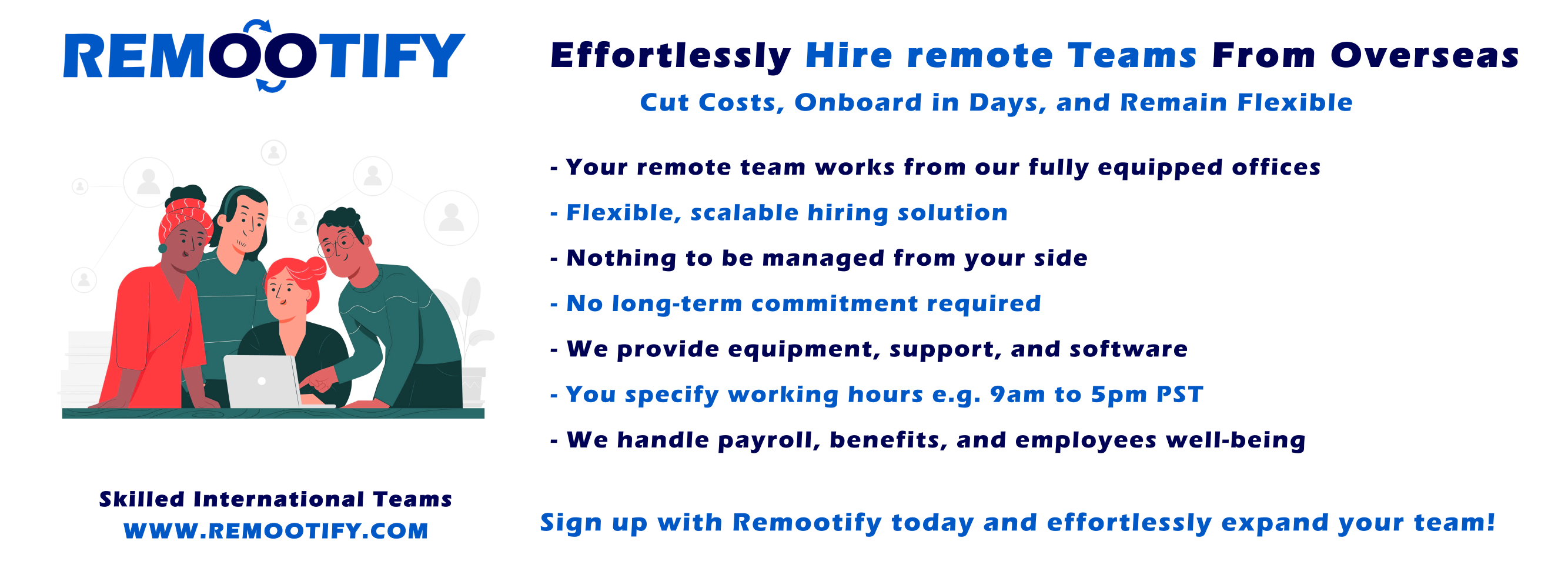Start hiring YOUR REMOTE TEAM, Today!
Enter your information below to start a discussion with one of our team members!

Payroll fraud is a growing concern for many businesses, big and small. Did you know that an unscrupulous employee can create fictitious ‘ghost employees‘ to siphon money from your company’s payroll? This blog will provide insightful strategies aimed at helping you detect these elusive ghost employees and prevent costly payroll fraud.
Ready to protect your business from falling prey to such fraudulent schemes? Let’s dive in!
Key Takeaways
- Ghost employees are fake people on the payroll who don’t actually work for the company. Paying them can cost businesses a lot of money and harm their reputation.
- Payroll fraud can take different forms, such as creating fake employee profiles, manipulating tax deductions or overtime claims, adding extra hours to timesheets, and hiding income from taxes.
- To detect ghost employees, businesses can run third – party audits, investigate employees with low or no tax deductions, review canceled checks, and examine Social Security numbers.
- Strategies to prevent payroll fraud include conducting background checks for potential employees, maintaining detailed records, implementing multi-party approvals for changes in the payroll system, providing anti-fraud training to employees, establishing robust audit processes for regular reviews of financial transactions and employee data accuracy,
Understanding Ghost Employees and Payroll Fraud
A ghost employee refers to a non-existent individual who is fraudulently added to a company’s payroll system, allowing someone else to collect their salary. Payroll fraud, on the other hand, involves any form of deceit or manipulation in relation to an organization’s payroll, resulting in unauthorized financial gain for the perpetrator.
What is a ghost employee?
A ghost employee is a fake person on the payroll. Money goes to this fake person. But, it’s not real. A sneaky worker or boss makes up this ghost and gets the money for themselves.
Paying a ghost employee can cost a business lots of money and make their name look bad.
Types of payroll fraud
Payroll fraud can take various forms, including:
- Fake master records: This involves creating fake employee profiles in the payroll system to receive payments for individuals who don’t actually work for the company.
- Tax fraud: Some employees might manipulate their tax deductions or withholdings to receive larger refunds from the government, causing financial loss to the company.
- Fraudulent overtime claims: This type of fraud occurs when employees submit false claims for overtime hours they didn’t actually work, resulting in inflated payments.
- Ghost hours: In this scheme, employees add extra hours to their timesheets or alter their attendance records to receive additional pay without actually working those hours.
- Commission fraud: Employees may manipulate sales records or commissions calculations to increase their earnings dishonestly.
- Hidden income: Some employees may request that a portion of their salary is paid under the table, off the books, thus evading taxes and defrauding both the company and the government.
How to Detect Ghost Employees
Detect ghost employees by running third-party audits, investigating employees with low or no tax deductions, reviewing canceled checks, and examining Social Security numbers.
Run third-party audits
Running third-party audits is an important strategy to detect ghost employees and prevent payroll fraud. These audits involve bringing in external experts or auditors who can independently review the company’s payroll records and processes.
By conducting these audits, businesses can identify any discrepancies or irregularities in their payroll system that may indicate fraudulent activity. Third-party audits provide a fresh perspective and unbiased analysis, helping to uncover hidden cost savings and improve records accuracy.
It is an effective way to ensure the integrity of the payroll system and protect against ghost employee schemes.
Investigate employees with low or no tax deductions
Employees with low or no tax deductions can be a red flag for payroll fraud. By investigating these individuals, businesses can uncover potential ghost employees or fraudulent activities.
It is important to review their records and verify if their reported income aligns with their actual wages. Additionally, comparing Social Security numbers and conducting thorough background checks can help identify any suspicious behavior.
By taking these proactive steps, businesses can detect and prevent payroll fraud before it causes financial losses and harm to the company’s reputation.
Review canceled checks
To detect ghost employees and prevent payroll fraud, it is important to review canceled checks. This involves examining the payments made to employees and ensuring that they are legitimate.
By carefully reviewing canceled checks, businesses can identify any suspicious transactions or payments made to non-existent individuals. This helps in uncovering any fraudulent activity within the payroll system.
Regularly reviewing canceled checks is a crucial step in maintaining the accuracy and integrity of payroll records, as well as preventing financial losses due to ghost employees and payroll fraud.
Examine Social Security numbers
To detect ghost employees and prevent payroll fraud, examining Social Security numbers is crucial. This step helps verify the authenticity of employee information and identify any discrepancies or fraudulent activity.
By cross-checking Social Security numbers with official records, employers can ensure that all employees are legitimate and not fictitious individuals added to the payroll system. This simple yet effective strategy adds an extra layer of protection against ghost employee schemes and helps maintain the accuracy of payroll records.
Strategies to Prevent Payroll Fraud
Implement background checks for potential employees, maintain detailed records, establish multi-party approvals, provide anti-fraud training, implement audit processes and clarify financial procedures to effectively prevent payroll fraud.
Read more to learn how to protect your business from fraudulent activity.
Conduct background checks for employees
To prevent ghost employees and payroll fraud, it is important to conduct background checks for all employees. This includes verifying their identities, employment history, and credentials.
By doing so, businesses can ensure that the individuals they hire are legitimate and trustworthy. Background checks help in identifying any red flags or inconsistencies in an employee’s past that may indicate a higher risk of fraudulent activity.
By implementing this strategy, companies can reduce the chances of hiring individuals who may try to exploit the payroll system for personal gain or engage in other fraudulent activities.
Keep detailed records
To prevent ghost employees and payroll fraud, it’s important to keep detailed records. Accurate and up-to-date records can help detect any discrepancies or fraudulent activities in the payroll system.
By maintaining thorough documentation of employee information, attendance records, salary rates, tax deductions, and other relevant data, businesses can easily spot any suspicious transactions or inaccuracies.
Regularly reviewing these records and reconciling them with other supporting documents can help ensure the accuracy and integrity of the payroll process. Additionally, keeping detailed records can also serve as evidence in case of an investigation into potential payroll fraud incidents.
Implement multi-party approvals
To prevent payroll fraud and detect ghost employees, implementing multi-party approvals is an effective strategy. This means requiring multiple individuals to review and approve any changes or additions made to the payroll system.
By involving different people in the approval process, it becomes more difficult for someone to create fictitious employees or manipulate payroll records without being detected. Multi-party approvals add an extra layer of security and accountability, helping businesses ensure the accuracy and integrity of their payroll processes.
Provide anti-fraud training
One effective strategy to prevent payroll fraud is to provide anti-fraud training to employees. By educating them about the different types of fraudulent activities and warning signs to look out for, employees can become more vigilant and proactive in detecting and reporting any suspicious behavior.
Training should cover topics such as how ghost employees are created, common red flags indicating potential fraud, and the importance of following proper payroll procedures. By empowering employees with the knowledge to identify and report fraudulent activity, businesses can strengthen their defenses against payroll fraud.
Establish audit processes
Implementing robust audit processes is crucial to detecting and preventing ghost employees and payroll fraud. Regularly auditing payroll records, financial transactions, and employee data can help identify any discrepancies or suspicious activities.
Surprise audits can be conducted to catch fraudulent behavior off-guard. By reviewing the accuracy of records, examining pay rates, verifying deductions, and cross-checking employee information with external sources, such as Social Security numbers, auditors can uncover any hidden ghost employees or fraudulent schemes in the payroll system.
Incorporating fraud data analytics tools into audit processes can also enhance detection capabilities by identifying patterns or anomalies that may indicate potential fraud.
Clarify financial procedures
To prevent payroll fraud and the creation of ghost employees, it is important for businesses to clarify their financial procedures. This means clearly outlining the steps and processes involved in handling payroll, such as how new employees are added to the system or how changes to employee information are made.
By providing clear guidelines and instructions, employees will have a better understanding of the correct procedures to follow, reducing the chances of fraudulent activity going unnoticed.
Additionally, having well-defined financial procedures makes it easier for auditors or investigators to identify any discrepancies or irregularities in the payroll process. It also helps ensure that records are accurate and up-to-date, making it harder for ghost employees to be added without detection.
Use a payroll partner
Using a payroll partner is an effective strategy to detect ghost employees and prevent payroll fraud. A payroll partner can help ensure the accuracy of your records by providing expert oversight and assistance in managing your payroll system.
They can conduct regular audits to identify any discrepancies or fraudulent activity, such as fake master records or tax fraud. By having a trusted third party handle your payroll processes, you can reduce the risk of internal collusion and manipulation.
Additionally, a payroll partner can provide valuable insights into best practices for preventing ghost employee schemes and implementing strong internal controls. This collaboration helps safeguard your business from financial losses and reputational damage caused by ghost employees and other forms of payroll fraud.
Punishments for Payroll Fraud
Payroll fraud is a serious offense, and those who engage in it can face severe punishments. The specific penalties for payroll fraud vary depending on the jurisdiction and the magnitude of the offense.
In general, individuals convicted of payroll fraud may be subject to fines, restitution orders, probation, or even imprisonment. Additionally, they may be required to repay any funds that were obtained through fraudulent means.
Punishments for payroll fraud serve as a deterrent and emphasize the importance of maintaining honesty and integrity in financial transactions. It is important for businesses to implement strong internal controls and regularly review their payroll processes to prevent such fraudulent activities from occurring in the first place.
Conclusion
In conclusion, taking proactive measures to detect and prevent ghost employees is crucial in safeguarding businesses against payroll fraud. By implementing strategies such as conducting thorough background checks, maintaining accurate records, and implementing multi-party approvals, organizations can significantly reduce the risk of fraudulent activities.
Additionally, providing anti-fraud training to employees and establishing robust audit processes further strengthens the defense against ghost employee schemes. With these effective strategies in place, businesses can protect their finances and reputation from the havoc wreaked by payroll fraud.
FAQs
1. What are ghost employees and how can they affect my business?
Ghost employees are fake or inactive workers who still get paid. They can wreak havoc on your payroll system, leading to big losses.
2. How can I identify ghost employees in my company?
You can use effective ghost employee detection methods like checking the account details of all accounting employees regularly and looking for signs of fraudulent activity in payroll systems.
3. Are there ways to prevent ghost employees from harming my business?
Yes, you can adopt strategies for detecting and preventing payroll fraud such as regular audits, cross-checking employee records, and using advanced software that detects fictitious employees
4. What is a good method for detecting fake workers?
One effective way against payroll fraud is by cross-verifying work hours, attendance records and pay rate consistency which helps in identifying ghost employees.
5. Can anyone give me some tips to stop this kind of loss?
Implement measures to detect and prevent payroll fraud like frequent audits, stringent hiring processes, keeping track of old employee data, biometric identification systems etc., to detect any suspected fraudulent activity quickly!





